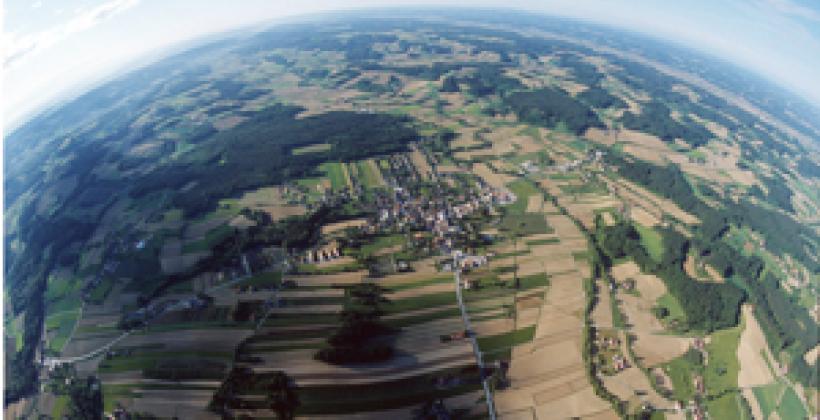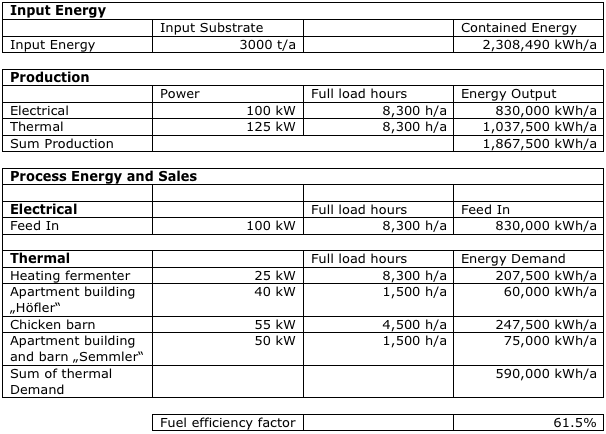
Location
Description
In the Hartberg eco-region in Austria, the SOLUTION project has served as a catalyst for the development of advanced communal demonstrations using an implemented bottom-up approach. Targeted activities included improvements in the energy efficiency of buildings with 70 % energy savings, the construction of new commercial buildings with an energy performance close to zero-energy consumption, decentralised district heating systems and polygeneration, large-scaled implementation of small and medium renewable energy systems applications, symbiotic integration of novel solar electricity storage units, improvements in the framework for potential private investors, and the promotion of innovative integration aspects of renewable energies.
Documents
Demo Site Expected Impact
*The KPIs for the new buildings are compared with the baseline of a reference building.
The demonstration site in Hartberg consists of 6 refurbished and 8 new buildings. Overall a gross floor area of 5679 m² has been refurbished in the project and 4609 m² have been newly constructed.
The energy consumption figures were monitored before and after the works, and were 250 kWh/m²/yr and 93 kWh/m²/yr respectively as average for the buildings included in the project.
The CO2 emissions were reduced by 185 tonnes of CO2 every year. The primary energy savings were 3292 MWh per year.
Site facts and figures
- Estimated population involved: 14,000
- Approx. geographical area coverage: 120 km2
- Approx. energy saving: 33 %
- Approx. energy from RES: 44 %
Technologies
Technologymix
The refurbishment actions at the existing building stock are supposed to achieve 70% reduction of energy consumption. At the Hartberg and Kaindorf region 19,500 m² of new commercial and residential buildings with ambitious energy performance will be constructed as exemplary pilot projects. One of the new built residential objects is located at Großsteinbach and shows a calculated heat energy demand of 23.3 kWh/m²a. The heating by a decentralized HVAC-system, which is supported by a heat pump, a 5 kWpeak PV system and energy saving appliances make it a nearly self-sufficient building (Picture 1).
Part of the SOLUTION project is also to install CHP and poly-generation units connected to district heating networks. The farm property “Höfler” has implemented a biogas CHP unit (100 kWel, 125 kWth) which feeds into a micro-grid connecting several surrounding farm buildings (Picture 2).
Within the project time a total of 320 kWpeak of building integrated PV are supposed to be installed. By now a façade-integrated poly-cristalline system of 6.6 kWpeak, a roof integrated system of 3.3 kWpeak, a roof-integrated thin-film system of 4.5 kWpeak and further 50 kWpeak of diverse typology have been installed. For some of the photovoltaic systems a symbiotic integration of innovative electricity storage (CAES – compressed air energy storage) units is planned to examine their feasibility.
Nearly energy self-sufficient Building
This residential building at Großsteinbach is designated as new eco-building according to the CONCERTO standards. Deviating from the original planning heat floor area has been extended from 131 to 156 m² due to requested higher place demand. This leads to a slightly changed cubature of the building resulting in the calculated heat energy demand of 23.3 kWh/m²a according to the energy performance certificate conducted with the “passive house projecting package” (PHPP).
Originally the plan had been to connect the building to a biomass district-heating grid. Now the heating energy is provided by a decentralized HVAC system supported by a heat pump. The installed PV system of 5 kWpeak generates 4,900 kWh annually. The use of energy saving lamps and appliances complete the ambitious construction of this new eco-building, which makes it nearly energy self-sufficient.
(taken from the periodic report)
Biogas CHP plant at farm „Höfler“
At the farm property „Höfler“ in Kaindorf a biogas plant has been installed. The produced biogas is directly used in a CHP of 100 kWel and 125 kWtherm, which has been connected to a district-heating network . The engine is shown in Picture 3.
The fermenter is supplied with poultry manure, sweet corn as well as grass silage and pig slurry of three co-operating farm entities. In order to operate efficiently the district-heating grid supplies heat to several farm buildings. The generated electricity is fed into the public grid by the nearby transformer. Between 5 – 10% of the electric energy is used for pumps, valves and moving parts in the fermenter.
An overview on design and operation values is given in Table 1.
Buildings and energy
The implemented measures in Hartberg included:
Energy efficiency in buildings
- Heat pumps
Energy systems integration
- Biomass boilers
- Thermal collectors
- District heating and cooling
- Biomass
- District heating extension in Hartberg/Neusafenau and in Kaindorf
- Heat exchanger system for cooling
- Photovoltaics
- Combined with battery units
- Cogeneration (CHP)
ICT
- Building energy management system
- Mechanical heating and ventilation system
According to the design data, the yearly cost savings for energy come to EUR 51 211. Based on the available financial data and the lack of investment costs, a payback calculation is not possible.
Lessons learnt
The following information has been gathered as part of the CONCERTO Premium policy research.
Benefits of CONCERTO:
Wider acceptance of planned/implemented measures.
Significant reduction of energy consumption / increase of renewable energy Upgrading of living area/community.
Barriers encountered:
Legal barriers:
One barrier was associated to the involvement of private, even residential investors as Third Parties requested as contract amendment to the EC services.
Solutions: To add more efforts and co-ordinate accompanying measures for Third Parties.
Administrative barriers:
One barrier was associated to timely synchronisation of envisaged actions.
Solutions: To add more efforts and co-ordinate accompanying measures for Third Parties.
Technical barriers:
- No real comprehensive energy concept, but studies on CO2 reductions & RES potentials.
- Providing accurately feedback.
Solutions: To co-ordinate and to promote initiatives as well as to make available existing know-how and expertise of the SOLUTION team available.
Economic barriers:
Due to the actual economic crisis various investments are postponed.
Solutions: Providing alternative business model options.
Social barriers:
High competitions among the market actors.
Solutions: Objective communication is one key issue.
Success factors identified:
Technical Success Factors:
The technologies in SOLUTION fell into two categories – renewables and energy efficiency. In general terms, the renewables lived up to more or less to expectations, the energy efficiency measures delivered what was required only in the new building sector.
Social Success factors:
Different social groups could be addressed and know-how development in the region. The quality of work training and education among craftsmen had been established and improved.
Institutional success factors:
Without surprise, RES and EE initiatives were subordinated to clear economic advantages. This meant that favourable frame conditions such as direct supports to investments, guaranteed feed-in tariff or tax deductions were key factors.
The CONCERTO approach
The CONCERTO actions in Hartberg include improvements of:
- the energy efficiency in buildings with 70% energy savings;
- construction of new commercial buildings with an energy performance of a passive house standard as exemplary pilot projects;
- decentralised district heating systems and polygeneration;
- large-scaled implementation of small/medium RES applications and symbiotic integration of novel electricity storage units and improvements of the framework for potential private investors and promotion of the innovative integration aspects of renewables.
Within five years, these measures should enable a 33% saving of energy consumed, and a 44% increase in the share of renewable energies and that there will be zero carbon emissions achieved in 2015.
Highlights
There will be zero carbon emissions achieved in 2015. The foreseen model area includes two dimensions of integration:
- the light house projects and related work
- the early adapting follow-up communities encouraged by target group specific dissemination activities
Thematic Field
- New Building(s)
- Refurbished Building(s)

